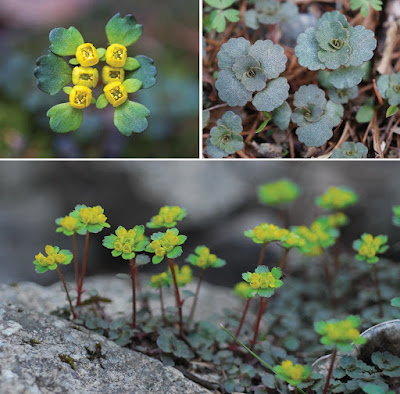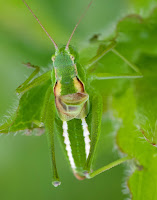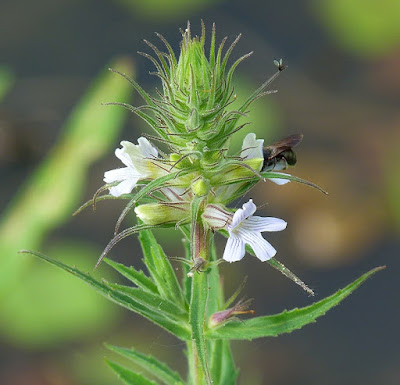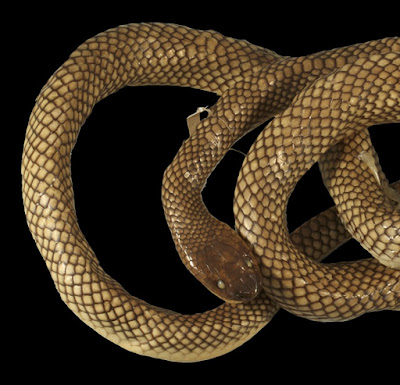[Most Recent Entries] [Calendar View]
Friday, November 9th, 2018
| Time | Event | ||||
| 4:25a | [Botany • 2018] Chrysosplenium ramosissimum (Saxifragaceae) • A New Species from Korea
Abstract This study describes and illustrates Chrysosplenium ramosissimum, a new plant species from Mt. Seonjaryeong, located in the central region of the Korean Peninsula. The species is most similar to C. valdepilosum but is readily distinguishable by the presence of yellowish-green bracteal leaves during flowering, highly branched sterile branches, shiny silvery dots on sterile branch leaves and larger tubercles on the seed coat. Keywords: Chrysosplenium, endemic species, seed morphology, sterile branch, DNA barcode Chrysosplenium ramosissimum Y.I.Kim & Y.D.Kim, sp. nov. 가지털괭이눈(Ga-ji-teol-gwaeng-i-nun) Diagnosis: Chrysosplenium ramosissimum is most similar to the sympatric species C. valdepilosum, but the former is readily distinguishable by the presence of yellowish-green (vs. bright yellow) bracteal leaves during flowering, highly branched and elongated sterile branches after fruiting (Fig. 4), shiny silvery dots on sterile branch leaves and larger tubercles on the seed coat (Fig. 3). .... Distribution: Chrysosplenium ramosissimum is only known to exist on Mt. Seonjaryeong in Gangwon-do, Korea, at an elevation of 630–910 m. To date, only one population of approximately 2,000 individuals has been discovered, near a small creek. In the absence of additional data, we presently score it as Data Deficient (DD), according to the IUCN Red List criteria (IUCN 2001). Ecology: Chrysosplenium ramosissimum occurs in deciduous forests of mountain valleys, where it grows in humid and semi-shaded areas near small creeks along with Quercus mongolica Fisch. ex Ledeb., Fraxinus rhynchophylla Hance and Acer buergerianum Miq. The flowering period of this species is late March to early May and the fruiting period is late May to early July. Etymology: The specific epithet of the new species refers to the highly branched sterile branches after fruiting. Yong-In Kim, Seong-Hyun Cho, Jung-Hoon Lee, Dae-Hyun Kang, Jin Hee Park and Young-Dong Kim. 2018. Chrysosplenium ramosissimum Y.I.Kim & Y.D.Kim (Saxifragaceae), A New Species from Korea. PhytoKeys. 111: 1-10. 10.3897/phytokeys.111.27182 | ||||
| 4:33a | [Entomology • 2018] Isophya horon • Bioacoustics and Morphology of A New Bush-cricket Species of the Genus Isophya (Orthoptera: Phaneropterinae) from Turkey
Abstract A new interesting species of the genus Isophya, Isophya horon sp. n., is described from Northeastern part of Turkey. The new species can clearly be distinguished from the closely related species by the calling song of male, and morphology. Morphologically, the shapes of the pronotum, tegmina, male cerci and ovipositor are distrinctive. The morphology, song structure and distribution clearly indicate that this new species is a member of the I. zernovi species-group. Additionally, some preliminary data on the male calling songs of closely related species (I. zernovi, I. karadenizensis and I. autumnalis) are also given. In addition, the preliminary data related to spermatophore characteristics (spermatophylax and ampulla weights) and sperm number of the new species are provided. Keywords: Orthoptera, Isophya horon sp. n., Orthoptera, Phaneropterinae, bioacoustics, spermatophore, sperm number, new species, Turkey, Karadeniz
Orthoptera: Tettigoniidae: Phaneropterinae: Barbitistini Isophya Brunner von Wattenwyl, 1878 Isophya horon sp. n. Etymology: “horon” in Turkish (in Greek: “khoron”), is a famous dance which refers to a group of a circle folk dances from the Eastern Black sea region of Turkey Hasan Sevgili. 2018. Bioacoustics and Morphology of A New Bush-cricket Species of the Genus Isophya (Orthoptera: Phaneropterinae) from Turkey. Zootaxa. 4514(4); 451–472. DOI: 10.11646/zootaxa.4514.4.1 | ||||
| 5:17a | [Botany • 2018] The Identity of Stemodia lanceolata (Plantaginaceae) and Its Occurrence in Brazil
Abstract In this contribution, we reassess the identity of Stemodia lanceolata (Plantaginaceae) and confirm its occurrence in Brazilian territory. We present a detailed and updated description, a fine illustration, and photographs of this species, along with comments on its distribution, habitat and phenology, and notes on taxonomic affinities. Stemodia lanceolata is characterized by its stiffy erect terminal inflorescence with filamentous aspect due to the long, linear-triangular, frequently out-curved floral bracts. Finally, we propose second-step lectotypifications for three names subordinated to S. lanceolata. Keywords: Chaco, Gratioleae, Pantanal, Eudicots André Vito Scatigna, María de las Mercedes Sosa, Vinicius Castro Souza and André Olmos Simões. 2018. The Identity of Stemodia lanceolata (Plantaginaceae) and Its Occurrence in Brazil. Phytotaxa. 375(1); 121–129. DOI: 10.11646/phytotaxa.375.1.9 | ||||
| 8:33a | [Herpetology • 2018] The Taxonomic History of Indo-Papuan Groundsnakes, Genus Stegonotus Duméril et al., 1854 (Colubridae), with Some Taxonomic Revisions and the Designation of A Neotype for S. parvus
Abstract Since its conceptualization in 1854, 29 species of the colubrid genus Stegonotus have been recognized or described, of which 15 (admiraltiensis, batjanensis, borneensis, cucullatus, derooijae, diehli, florensis, guentheri, iridis, heterurus, melanolabiatus, modestus, muelleri, parvus, poechi) are still considered valid today. Original species descriptions for the members of this genus were published in Dutch, English, French, German, and Italian and, perhaps as a consequence of these polyglot origins, there has been a considerable amount of confusion over which species names should be applied to which populations of Stegonotus throughout its range across Borneo, the Philippines, Wallacea, New Guinea, Australia, and associated archipelagos. In addition, the terminology used to notate characteristics in the descriptions of these forms was not uniform and may have added to the taxonomic confusion. In this paper, we trace in detail the history of the type specimens, the species, and the synonyms currently associated with the genus Stegonotus and provide a basic, species-specific listing of their characteristics, derived from our examination of over 1500 museum specimens. Based on our data, we are able to limit the distribution of S. modestus to the islands of Ambon, Buru, and Seram in the central Moluccas of Indonesian Wallacea. We correct the type locality of S. cucullatus to the Manokwari area on the Bird’s Head Peninsula of West Papua, Indonesian New Guinea and designate a neotype for S. parvus, a species likely to be a regional endemic in the Schouten Archipelago of Cenderawasih Bay (formerly Geelvink Bay), Indonesian New Guinea. We unequivocally identify and explain the problematic localities of the type specimens of S. muelleri and Lycodon muelleri, which currently reside in the same specimen jar. We remove L. aruensis and L. lividum from the synonymy of S. modestus and recognize them as S. aruensis n. comb. and S. lividus n. comb., respectively. We remove S. keyensis and Zamenophis australis from the synonymy of S. cucullatus and recognize them as S. keyensis n. comb. and S. australis n. comb., respectively. We further remove S. reticulatus from the synonymy of S. cucullatus, S. dorsalis from the synonymy of S. diehli, and S. sutteri from the synonymy of S. florensis. We designate lectotypes for S. guentheri, S. heterurus, S. lividus, and S. reticulatus. Lastly, we introduce S. poechi, a valid species not mentioned in the scientific literature since its description in 1924. This brings the diversity in the genus Stegonotus to 22 species. We also caution that in a complex group of organisms like Stegonotus any rush to taxonomic judgment on the basis of molecular and incomplete morphological data sets may perpetuate errors and introduce incongruities. Only through the careful work of connecting type material with museum specimens and molecular data can the taxonomy and nomenclature of complex taxa be stabilized. Keywords: Stegonotus, Colubridae, taxonomy, nomenclature, type specimens, neotype, lectotype, synonymy, Malaysia, Borneo, Philippines, Indonesia, Wallacea, New Guinea, Dutch East Indies, Papua New Guinea, Australia
Christine M. Kaiser, Hinrich Kaiser and Mark O'Shea. 2018. The Taxonomic History of Indo-Papuan Groundsnakes, Genus Stegonotus Duméril et al., 1854 (Colubridae), with Some Taxonomic Revisions and the Designation of A Neotype for S. parvus (Meyer, 1874). Zootaxa. 4512(1); 1–73. DOI: 10.11646/zootaxa.4512.1.1 |
| << Previous Day |
2018/11/09 [Calendar] |
Next Day >> |














